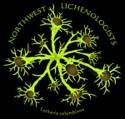Almost never can I resist photographing P. venosa, “Without a doubt the cutest little Peltigera” according to McCune and Geiser (2009). Looked at their description again (goes to show it is worthwhile to read through about even the easiest to identify lichens) to find “If you look closely at the soil around these individuals you might find the blue-green photomorph of P. venosa, the fungus associated only with the blue-green partner and lacking green algae.” Thereafter the cyanomorph, long overlooked, was not hard to find, and exceptional at the location north of Mt Townsend.
Just now looking further Smith et al. (2009) The Lichens of Great Britain and Ireland has “A blue-green morphotype of P. venosa frequently occurs separately or sometimes with the green morphotype; this consists of small, ± ascending, overlapping, brown-black squamules, up to 1 mm long, semi-circular or ligulate, photobiont Nostoc, evenly distributed throughout the inner part of the lobe. This phase resembles extreme, compacted, reduced morphs of Leptogium gelatinosum and other small Leptogium species.” Daphne - please let me know if you see those. (Occurring separately would be difficult to identify.)
Also find (although not able to access the paper) “Tonsberg & Holtan-Hartwig (1983) observed that the green cephalodiate thalli of Peltigera venosa were often associated on the substratum with a brown or black layer developing into small black squamules. Normal thalli, containing green algae, seemed to grow from this dark crust, which contained cyanobacteria and could be interpreted as the second member of a photosymbiodeme. Tonsberg & Holtan-Hartwig (1983) considered a more detailed examination of the early stages to be necessary. The complex system of developmental pathways and morphogenetic interactions expressed in the two morphologies of Peltigera venosa is the subject of this paper.” - https://www.semanticscholar.org/paper/Photosymbiodemes-and-their-Development-in-Peltigera-Ott/27b3767a9564dbdb5b5932b63cb75729cd40deef Seems to indicate the cyanomorph preceeds the phycomorph.
Interesting the degree to which the photomorphs of P. venosa differ from one another as compared to P. britannica and P. aphthosa, on a spectrum somewhat between them and the dendriscocauloid cyanomorphs.

